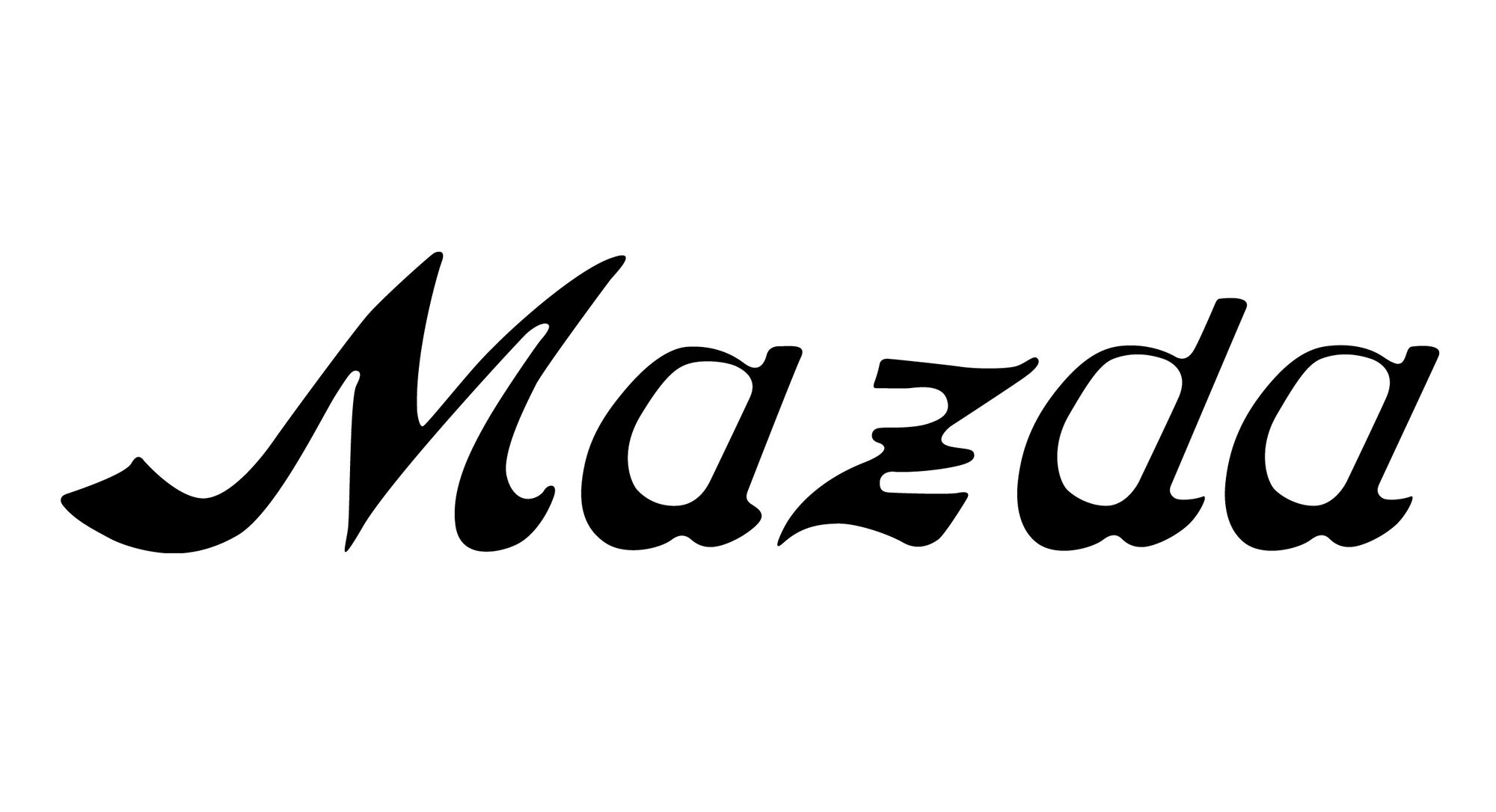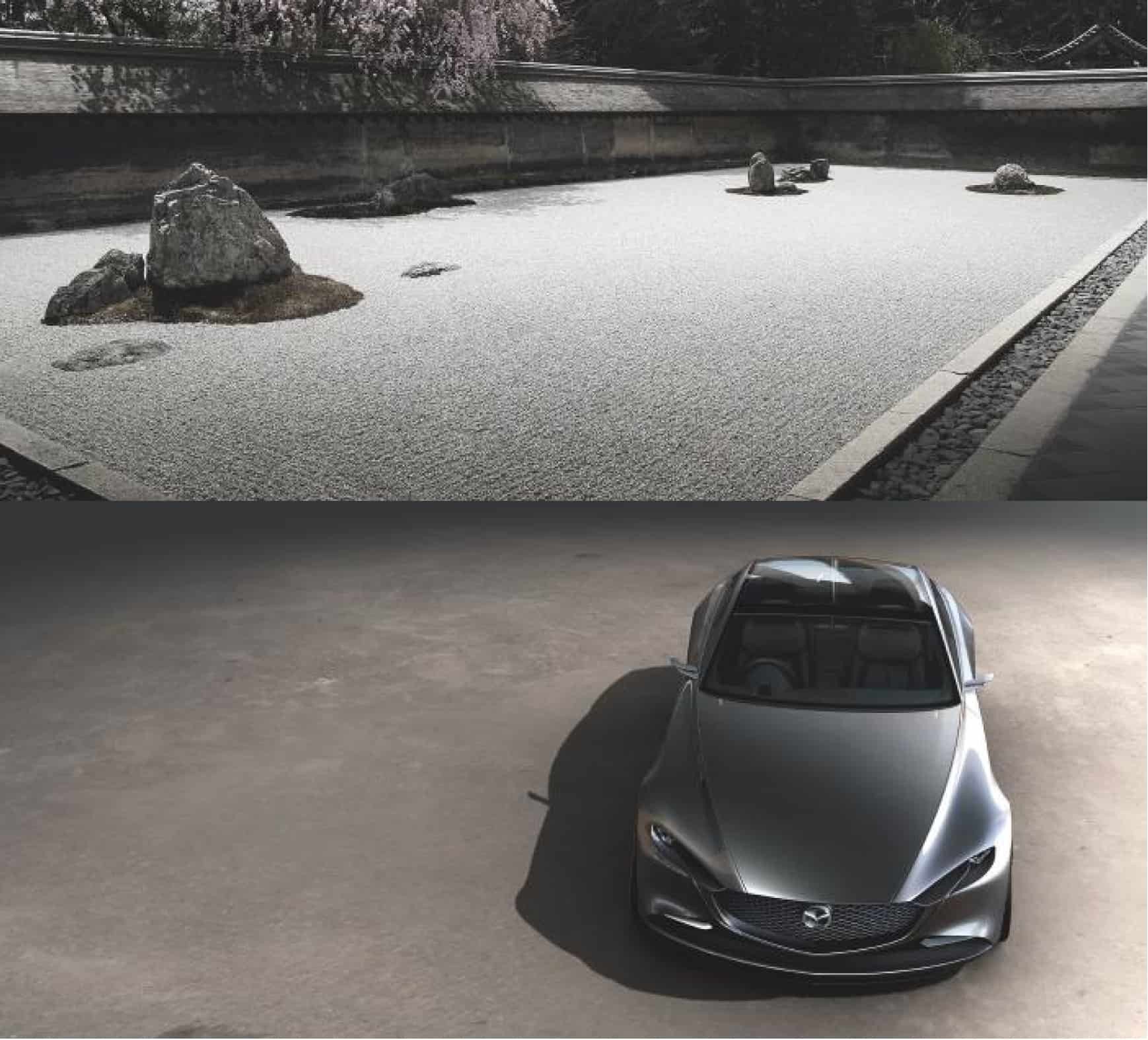INSPIRE
MAZDA DICTIONARY
INSPIRE
MAZDA DICTIONARY
Do you know the origin of the name Mazda? Ever heard the phrase “jinba ittai” and wondered what it means or how to pronounce it? Enlighten yourself with our definitive guide to Mazda’s Japanese terminology.
Hacho / Hashiru yorokobi / Jinba ittai / Kaicho / Kansei / Kodo / Ma / Mazda / Monotsukuri / Mottainai / Musubu / Sori / Takumi / Takuminuri / Utsuroi / Yohaku
Hacho 破調
ha-chō
Hacho means “broken rhythm” and describes Mazda’s process of deliberately selecting contrasting materials for a vehicle’s cabin, to create an environment that is simultaneously calming and uplifting for the occupants. In the Mazda CX-60, the designers set out to reflect this mood with the use of materials including Nappa leather and maple wood. Mazda Interior Designer Mai Utagawa calls this “a comfortable disturbance”.

This phrase describes the very soul of Mazda and means “celebrate driving”. It’s an ethos that applies to every Mazda, from supermini to SUV to sports car, and is central to Mazda’s belief that cars are not merely transportation, they also enrich the lives of their drivers and passengers.
Translated as “horse and rider as one”, jinba ittai refers to the intuitive connection between a Mazda and its driver. It is the cornerstone that Mazda’s designers and engineers base their work on. The phrase was first coined during the development of the MX-5 but applies to every Mazda model. It is the feeling of oneness between yourself and your car as it responds exactly as you intend, enabling you to experience a comfortable, safe and enjoyable drive.
Kaicho or “harmony” is a philosophy that leads Mazda designers to choose a variety of materials and textures that really complement each other. “We want people to feel the delicate, thorough work applied,” says Interior Designer Mai Utagawa. It’s this attention to detail that makes Mazda interiors so beautiful.


Kodo is a Mazda-unique word that means “Soul of Motion”. It applies to the overall design philosophy introduced by Mazda’s Global Head of Design, Ikuo Maeda, who says it “breathes life into metal, because Mazda believes a car is more than just a means of transportation”. Kodo design’s intention is to create a soul-stirring emotional bond between the car and its driver.
Ma is a place of connection between the inside and outside. It describes the Japanese architectural tradition of “bringing the outside in”. You can experience ma in the cabin of any recent Mazda model, in the way that light flows in and picks out beautiful design details.

Mazda became the company name in 1931. It is derived from Ahura Mazda, the Zoroastrian god of harmony, intelligence and wisdom – all character traits of the brand. Prior to the name change, the company was a cork manufacturer called Toyo Kogyo Co. Ltd. When it began producing vehicles, the first one was a three-wheeled truck named Mazda Go. Executives at Toyo Kogyo Co. Ltd felt inspired by the name’s significance and interpreted it as a symbol of the rise of automotive civilisation and culture. It was also seen as a fitting tribute to the company’s founder, Jujiro Matsuda, whose name had the same pronunciation.

For Mazda, car manufacturing truly is an art form and monotsukuri is a Japanese term that means “the art of making things”. It covers the practical – product planning, design, development and production – and encompasses a feeling of pride, dedication and skill in pursuit of innovation. Mazda’s monotsukuri innovation was launched in 2006, and has since achieved over 30 per cent improvement in development efficiency while streamlining production-facility and tooling investment by over 20 per cent.
Mottainai is a Japanese expression formed from the words mottai (importance) and nai (lack of something). In short, it means “don’t be wasteful”. Mazda feels passionately about mottainai and is endeavouring to conserve as many resources as possible, whether that’s by using renewable energy in the factory, re-using plastics or using sustainable materials such as cork in its interior design, as in the MX-30 pictured below.

The Japanese word for “tie” has a philosophical meaning at Mazda. Musubu is about creating a strong connection and, inspired by the ancient art of knot tying, Mazda introduced it to great effect in the stitching of the Mazda CX-60 as seen below.

Sori describes the process of creating curves with poise and balance. It is notable in Japanese architecture and the curvature of a blade, as exemplified in the samurai sword pictured below. You can see sori in the striking S-curves, revealed on the sides of Mazda cars when light plays along them. It’s a critical part of Kodo design, as the metal sides of the car really do come to life as the light strikes.

Mazda’s takumi are the dedicated master craftsmen and craftswomen who design and build its vehicles, honing their skills over many years. Each takumi has a specialist domain, from fabric to clay or metal, and they take on apprentices to ensure that their techniques carry on into the future. These craftsmen and craftswomen never compromise in their mission to build Mazda vehicles with the utmost precision.
How do you get a robot to match the skills of an artisan in the paint shop? You develop takuminuri or “paint by master craftsman”, a computer-controlled system that mimics the way a takumi master would hand-paint a Mazda. With Mazda’s innovative colours, such as Soul Red Crystal, enhancing Kodo design, it’s crucial to have the perfect paint finish. Discover more about Mazda’s paint techniques here.
Utsuroi reflects the changes in natural light as the seasons of the year pass. For Mazda, understanding utsuroi allows its designers to become masters of light and shadow, creating designs that make the vehicle appear alive. “At Mazda we want to create designs that make people feel like the car is a living being,” says Ikuo Maeda, Mazda’s Global Head of Design.
Sometimes design is as much about what you leave out as what you put in. Yohaku is “the beauty of empty space” and it’s a technique that features in traditional Japanese arts – and Mazda cars. “Importance is attached to making the space look beautiful,” says Interior Designer Mai Utagawa. Yohaku helps to create beautiful exteriors and relaxing interior designs for Mazda cars.

A note about Japanese pronunciation in English: The phonetic spelling above uses the letter “L” in place of the letter “R”, which is used in the formal spelling of the word. It is likely that most English speakers hear “R”, but in Japanese it is actually a hybrid of the English “R”, “L” and “D” sounds. Here is a useful guide to learning how to pronounce the Japanese “R”.
MADE IN JAPAN
The proof of Mazda’s superb design and engineering skills is in its unique range of vehicles
MADE IN JAPAN
The proof of Mazda’s superb design and engineering skills is in its unique range of vehicles

